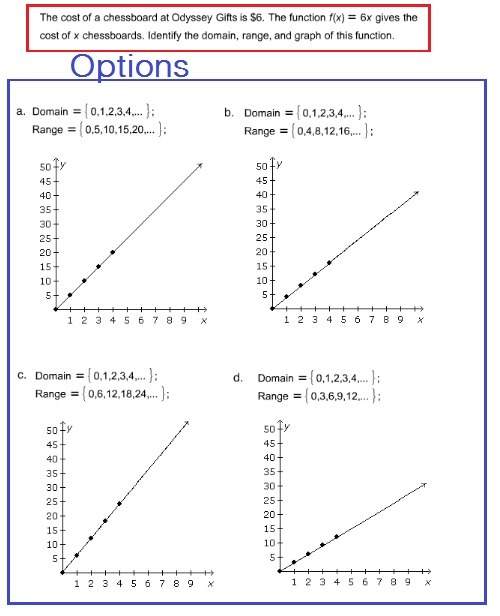
Mathematics, 10.04.2020 21:12 pandadude123
In this mini-case you will statistically evaluate the tests of controls on accounts payable for the 2016 audit of EarthWear Clothiers, Inc.
INSTRUCTIONS:
Use IDEA to compute (1) the Sample Size for each control activity and (2) the Upper Deviation Rate for the sample results provided on Work Paper 8-1. Record the results from IDEA in the fields on Work Paper 8-1 indicated below. Please refer to Chapter 8 of the textbook for instructions on using IDEA.
EARTHWEAR CLOTHIERS
Control Activities Testing - Sampling and Evaluation Sheet: Accounts Payable
December 31, 2016
Compute Sample Size
The list below indicates the control activities tested using voucher packets in Part A (Part A was a Chapter 6 assignment, but you can complete this assignment even if you did not complete Part A). Use the information provided below to calculate the sample size using IDEA. Please refer to Chapter 8 of the textbook for instructions on how to use IDEA to calculate sample sizes. When different sample sizes are computed for control activities that will be tested concurrently, it is common to use the largest sample size computed for testing all control activities (See Chapter 8 for a more detailed description. Note: For the sampling functions to work in IDEA a workbook needs to be open. Any workbook will do. For example, you can open the "Metaphor Employee Data" workbook, which is installed with IDEA.)
Compute Upper Deviation Rate
The list below indicates the test of controls results for each control activity. Use the information provided to evaluate the results using IDEA. Please refer to Chapter 8 for instructions on using IDEA to evaluate test results and to compute the upper deviation rate. After you compute the upper deviation rate, determine whether the test results met the objectives and can be accepted (i. e., determine whether the computed upper deviation rate is below the tolerable deviation rate noted above for the control activity). Select "Accept" or "Reject" from the drop down menu in each cell of the Accept/Reject column. (Round your deviation rate answers to 2 decimal places. Omit the "%" sign in your response.)
Work Paper 8-1
Description of Control Activities Desired Confidence Level Population Tolerable Deviation Rate (%) Expected Population Deviation Rate (%) Sample Size
1
Document packet includes all documents appropriate for the transaction.
90 % 2147 5 % 1 % ?
2
The Purchase Requisition is signed by a supervisor.
90 % 2147 10 % 4 % ?
3
The Purchase Order is signed by an authorized purchasing agent.
90 % 2147 10 % 1 % ?
4
Quantities on vendor's invoice agree with related receiving report and purchase order, and invoice is mathematically correct.
90 % 2147 5 % 1 % ?
5
All documents in voucher packet have been stamped "paid".
90 % 2147 10 % 1 % ?
Sample Size Used
Description of Control Activities Desired Confidence Level Sample Size Number of Deviations Computed Upper Deviation
Rate (%) Accept/ Reject
1
Document packet includes all documents appropriate for the transaction.
90 % ? 0 ?%
2
The Purchase Requisition is signed by a supervisor.
90 % ? 2 ?%
3
The Purchase Order is signed by an authorized purchasing agent.
90 % ? 1 ?%
4
Quantities on vendor's invoice agree with related receiving report and purchase order, and invoice is mathematically correct.
90 % ? 1 ?%
5
All documents in voucher packet have been stamped "paid".
90 % ? 0 ?%

Answers: 2


Another question on Mathematics

Mathematics, 21.06.2019 13:20
Which statement explains how you could use coordinate geometry to prove that quadrilateral abcd is a parallelogram? -5 -4 -3 -2 -1 t 1 2 3 4 prove that all sides are congruent and have slopes that are opposite reciprocals prove that segments ad and ab are congruent and parallel prove that opposite sides are congruent and have equal slopes prove that segments bc and cd are congruent and parallel
Answers: 1

Mathematics, 21.06.2019 19:20
1- what do you think the product of a nonzero rational number and an irrational number is? is it rational or irrational? make use of variables, the closure property of integers, and possibly a proof by contradiction to prove your hypothesis.2- why do we have to specify that the rational number must be nonzero when we determine what the product of a nonzero rational number and an irrational number is? if the rational number were 0, would it give us the same result we found in the first question?
Answers: 2


Mathematics, 21.06.2019 23:00
What is the value of n in the equation -1/2(2n+4)+6=-9+4(2n+1)
Answers: 1
You know the right answer?
In this mini-case you will statistically evaluate the tests of controls on accounts payable for the...
Questions

History, 11.07.2019 17:00

Business, 11.07.2019 17:00

Social Studies, 11.07.2019 17:00


Mathematics, 11.07.2019 17:00

Spanish, 11.07.2019 17:00

Mathematics, 11.07.2019 17:00


English, 11.07.2019 17:00

Mathematics, 11.07.2019 17:00


History, 11.07.2019 17:00

Mathematics, 11.07.2019 17:00

History, 11.07.2019 17:00


History, 11.07.2019 17:00

Mathematics, 11.07.2019 17:00

Mathematics, 11.07.2019 17:00

Physics, 11.07.2019 17:00





